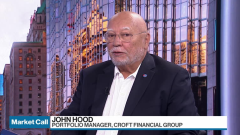Dec 11, 2023
BOJ to See Little Need to End Negative Rate in December, Sources Say
, Bloomberg News

(Bloomberg) -- Bank of Japan officials see little need to rush into scrapping the world’s last negative interest rate this month as they have yet to see enough evidence of wage growth that would support sustainable inflation, according to people familiar with the matter.
That’s an indication the central bank is likely to keep its monetary stimulus settings unchanged at a two-day policy meeting ending Dec. 19, despite recent market speculation that the negative rate may be scrapped as soon as the December meeting. BOJ officials view the potential cost of waiting for more information to confirm solid wage growth as not very high, the people said.
The yen extended losses to 1% in afternoon trading after the news, to around the 146.46 per dollar level. It had been down about 0.7% earlier, amid market debate that last week’s rally had gone too far. Nikkei futures extended gains.
Traders said a further decline of the yen would depend on how the Federal Reserve characterizes its policy outlook when the Open Market Committee meets on Wednesday and on the details from next week’s BOJ meeting.
The report about the BOJ has further removed the possibility of an early elimination of negative interest rates, said Fukuhiro Ezawa, head of financial markets in Tokyo at Standard Chartered Bank. “But in order to see dollar-yen above 147, it will be necessary to confirm there is nothing in the FOMC dot chart or the BOJ meeting,” Ezawa said.
The bank will make its final policy decision after reviewing all available data between now and the decision, including its Tankan survey due Wednesday and conditions in financial markets up to the last minute, according to the people. The BOJ has surprised economists and market participants previously in July and last December, taking advantage of expectations of no change.
Governor Kazuo Ueda spurred policy normalization speculation among investors last week when he said his job would become more challenging from the year-end. BOJ officials view Ueda’s comment as merely a general statement, not a signal of impending policy change, the people said.
Earlier Monday, markets were pricing in an 8% chance of a hike in December, and a 46% likelihood of a move by the end of January. Policy normalization was fully priced in by the end of April.
Economists were more cautious. Almost all of the 52 economists surveyed by Bloomberg earlier this month expect a stand-pat decision next week. Half of them predict authorities will scrap the negative rate in April.
The fate of the subzero rate has become a key focus among BOJ watchers after the BOJ made tweaks to its yield curve control mechanism with adjustments in July and October, adding flexibility to the policy and potentially limiting the impact on markets should it be phased out as part of a normalization of policy.
--With assistance from Yuji Okada, Daniel Ten Kate, Cormac Mullen and Daisuke Sakai.
(Adds updated chart)
©2023 Bloomberg L.P.






